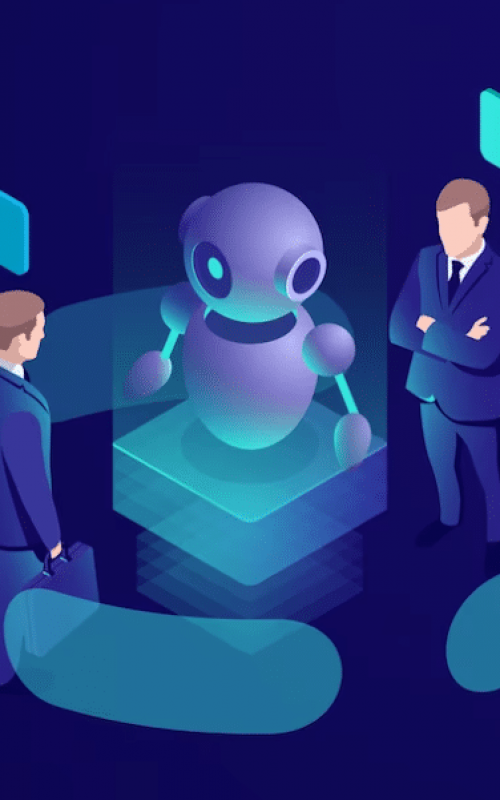ECLEVAR excels in R&D, driving cutting-edge technological solutions. Our multidisciplinary team pushes innovation boundaries across various domains, from science to technology.
New digital technologies are bringing about a gradual transformation in the healthcare sector, with the aim of addressing the major challenges faced by the healthcare system.
These challenges include the aging population, the rise of chronic diseases, the lack of medical services in certain areas, and the growing demand for personalized medicine.
The integration of digital technologies has the potential to enhance care coordination, streamline administrative tasks, and even facilitate diagnosis and therapy in some cases.
The healthcare industry is increasingly adopting various connected tools, such as wearable devices (e.g., bracelets, smartwatches, and smart clothing), telemedicine, shared medical data, and virtual or augmented reality. These tools empower patients to play a more active role in their healthcare journey. In France, since September 2018, healthcare professionals have been able to provide telemedicine consultations and treatments, which reduce the need for unnecessary travel and are covered by social security.
Remote expertise enables coordinated management among healthcare professionals. However, the implementation of these new approaches to healthcare management and patient care requires a thorough evaluation of the digital tools employed. This white paper specifically focuses on chatbots.
Every day, millions of people enter search queries on platforms like Google, only to be presented with a list of results, typically in the form of web pages where they must further search for specific information. In this context, chatbots have emerged as software robots capable of simulating natural language and engaging in automated conversations with individuals. Chatbots offer the convenience of receiving tailored responses or services. In the literature, chatbots and conversational agents are often categorized based on their understanding of natural language, with some relying on keyword or rule engines, while others utilize machine learning techniques. For the purposes of this white paper, we will use the term “chatbot” in a general sense. Regardless of their scope, theme, or level of sophistication, chatbots operate according to the same model:
The response can be generic (the same for all users), contextualized (adapted to the specific context, such as time and location), or personalized (tailored to individual users, such as providing their bank balance). Chatbot technologies are accessible through various digital channels, including text-based platforms like SMS, web pages, messaging applications, and mobile apps, as well as voice-based platforms like smart speakers and embedded services.

Today, health is one of the leading topics researched by Internet users on search engines, as shown by the increasing use of health forums and specialized sites for the general public in search of answers on a disease and on the different types of care. Although these forums and sites allow for a lot of sharing of experience between patients, the information is generally not subject to verification by health professionals, and is often free of any context, resulting in a risk of poor information or «misinformation» of the patient.
Access to quality medical information for all is therefore a major challenge in the process of empowering individuals to take responsibility for their health. New technologies, and in particular chatbots, drawing on verifiable information, would be perfectly adapted to meeting these challenging issues.
Patients who avoid forums for the reasons mentioned above may have to consult documentation that is sometimes difficult to understand for non-health professionals. In addition to providing reliable information, the chatbot can use language adapted to the user’s level of understanding, depending on whether the person is a patient or a healthcare professional.
In oncology, WeFight has developed a chatbot called «Vik», which allows breast cancer patients to benefit from follow-up and advice, particularly on their lifestyle habits, as well as information about the disease and treatments. The chatbot also offers different access for patients and their families with a personalized service (possibility of subscriptions, drug reminders, etc.).
We can also note the example of the «Lybrate» chatbot developed in India. Published on Facebook Messenger, Lybrate answers simple health-related questions. It offers patients quizzes to perfect their knowledge. It can then refer them to an online consultation with a physician on the Lybrate website.
Quality of life and to reduce the costs of treating diseases.
Many communication tools and campaigns have been deployed to convey prevention messages. Conversational agents can offer many advantages in the field of prevention, including virtual support combined with advice. For example, by working on daily eating habits, chatbots can help people adopt healthy lifestyles, as evidenced by a study on obesity pre- vention in Italy.
In January 2019, the Ramsay General Health Foundation launched a chatbot on its Facebook page. Dedicated to prevention, it allows for a dialogue with three virtual experts depending on the theme chosen: a stress expert, a nutrition expert and a tobacco addiction expert. The Ramsay General Health Foundation presents this chatbot as a tool that responds in a personalized way to users’ expectations by offering tailor-made programs, weekly check-ups, or an «alert» to accompany the user in the difficult moments of quitting smoking.

Smart Alfred, developed by the Betterise company and available in a Beta version on Facebook Messenger, offers users a personalized follow-up on different themes such as morale, alcohol, stress… Depending on the user ’s answers, it pushes personalized content (recipes, physical activity tips, etc.) and allows users to compare their answers with their respective histories (number of glasses of alcohol drunk, morale during the last few days, etc.).
Digital technology and the resulting immediacy are omnipresent in today’s world, including in healthcare.
It sometimes takes a long time to obtain medical appointments, especially in certain regions where there are hardly any physicians. When patients have new symptoms, they want to quickly understand why. Web searches often yield multiple and sometimes unreliable results. Patients may feel overwhelmed and not know where to go, for example by going to the emergency room for a minor illness. To overcome this, several chatbots have been developed to provide answers and steer the patient in the right direction.
For example, the MedWhat7 chatbot, developed in the United States by healthcare professionals, is used to diagnose relatively minor illnesses (rhinitis, sore throat, nausea, etc.) and to refer patients to a healthcare professional for an appointment if necessary. Once a diagnosis has been proposed, it has to be validated by a physician. This technology thus makes it possible to avoid long waits, and to accelerate the referral of patients to appropriate healthcare structures.
In China, MILO, a chatbot inside the Baidu Doctor app8, saves the physician time in diagnosis by analyzing the patient ’s symptoms before the appointment and offering the physician a preliminary diagnosis that he or she must then validate. The physician can access medical information while the patient can make an appointment directly via the chatbot. This example is a good illustration of the role this technology can play in setting up medical appointments: interviews prepared in advance enable the patient ’s needs to be determined better so that they get care faster, which allows more time for personal exchanges between the patient and the health professional.
Far from wanting to replace the medical profession by proposing a diagnosis (the latter, once proposed, must always be validated by a physician), the chatbot is positioned as a facilitator of the patient-physician relationship: it is a communication vector9.
In healthcare, more than in any other field, a chatbot must meet certain essential criteria in terms of form, content, safety or technology.
The notion of risk when the chatbot is used by health professionals or patients must be integrated into its design, and, depending on the level of risk, appropriate regulations must be applied. Quality, relevance, efficiency, safety and data processing are key criteria to be taken into account at each phase of a chatbot project.
As seen above, the chatbot is part of an ecosystem composed of multiple e-health solutions.
If it is to bring value to its users, patients or healthcare professionals, the chatbot must be a reliable solution. For example, it will be necessary to indicate at the beginning of the conversation the sources of the data used by the chatbot or how the information has been scientifically validated by health professionals, expert groups or authorities. Studies or documents can also be cited throughout the conversation without adding to the dialogue, for example with links that go directly to the sources. The chatbot dialogue will have to be validated by the users. For a pharmaceutical
The sector is governed by many standards and regulations, such as ISO standards for medical devices or FDA (the United States Food and Drug Administration) certifica tions, and each project team will have to consider whether or not it is necessary to meet these different criteria.
Subscribe to our newsletter

VISIT US
ECLEVAR FRANCE:
231 rue Saint-Honoré, 75001 Paris, France
ECLEVAR GMBH
ERFURT, Erfurt Hauptbahnhof
4th, 5th floor
Bahnhofstr. 38 Erfurt 99084
ECLEVAR Australia
Umina Beach NSW 2257, Australia
ECLEVAR UK Limited
3rd Floor 207 Regent Street, London, W1B 3HH
CONTACT US